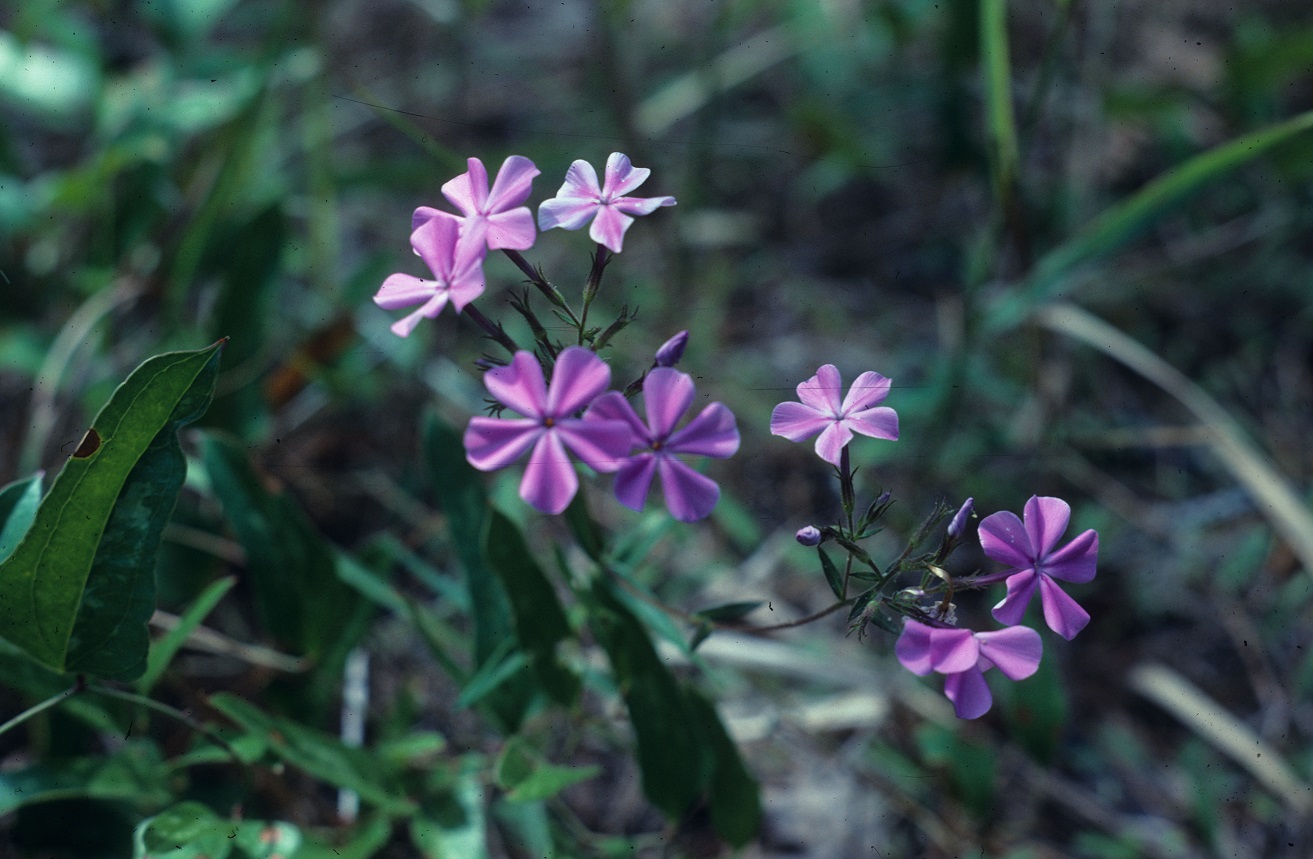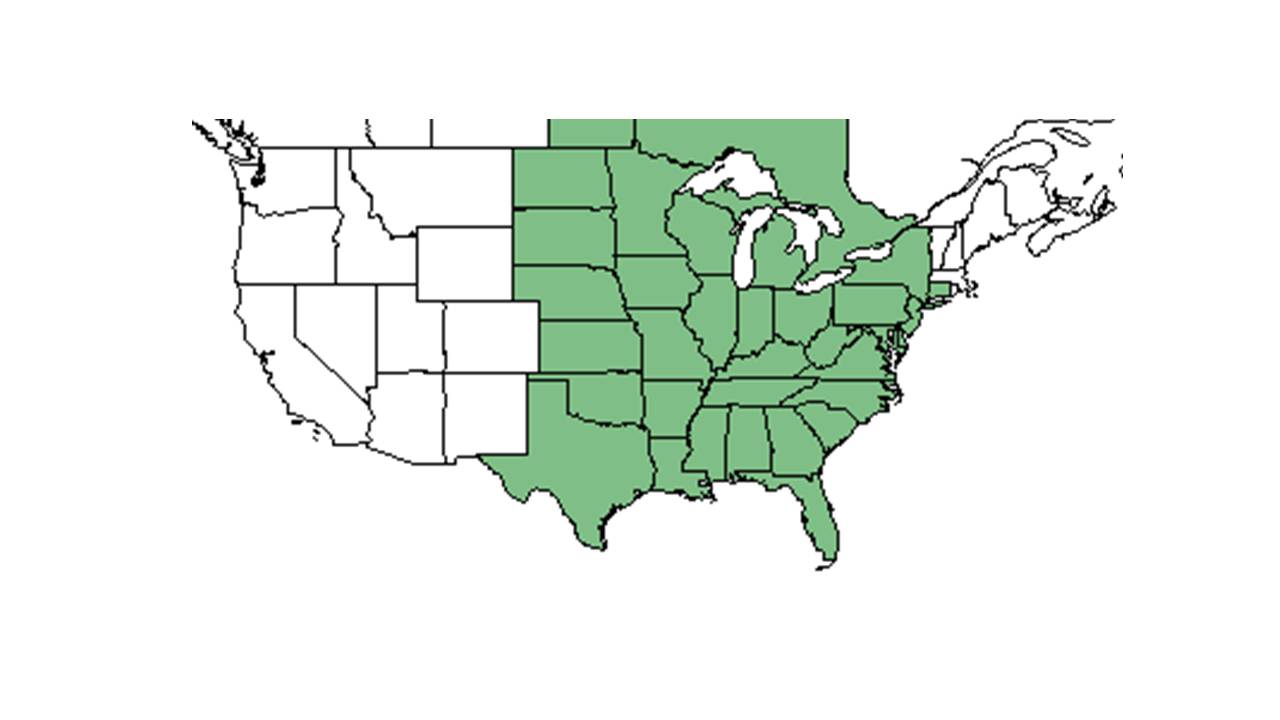Phlox pilosa
| Phlox pilosa | |
|---|---|

| |
| Photo taken by Gil Nelson | |
| Scientific classification | |
| Kingdom: | Plantae |
| Division: | Magnoliophyta - Flowering plants |
| Class: | Magnoliopsida – Dicotyledons |
| Order: | Solanales |
| Family: | Polemoniaceae |
| Genus: | Phlox |
| Species: | P. pilosa |
| Binomial name | |
| Phlox pilosa L. | |

| |
| Natural range of Phlox pilosa from USDA NRCS Plants Database. | |
Common name: Downy phlox[1]
Contents
[hide]Taxonomic notes
Synonyms: none.[1]
Subspecies: Phlox pilosa Linnaeus ssp. deamii Levin; Phlox pilosa Linnaeus ssp. detonsa; Phlox pilosa Linnaeus ssp. ozarkana; Phlox pilosa Linnaeus ssp. pilosa; Phlox pilosa Linnaeus ssp. pulcherrima Lundell.[1]
Description
"Herbaceous or subligneous, short rhizomatous or stoloniferous perennials. Leaves simple, entire, mostly subsessile. Opposite with bases connected by a stipular line or the upper cauline leaves subopposite, rarely alternate. Inflorescence cymose or paniculate-same length as the tube, tube sinuses semi-transparent; corolla salverform, the lobes cuneate or widely or narrowly obovate to suborbicular, apex entire, erose, or notched; anthers unequally inserted near base of corolla tube and included, or at the mouth of the tube and 1 or more usually exserted; styles 3, almost completely fused or appearing cleft or parted. Capsule papery, subglobose or ellipsoid, 4-6 mm long, loculicdial. A genus of considerable horticultural interest and taxonomic difficulty."[2]
"Slender, erect, flowering stems 2-5 dm tall, often with 2-5 branches from upper nodes, sterile shoots absent or not persistent. Nodes 6-12 on the flowering stems, leaves narrowly lanceolate, the largest 4-8 cm long, 3-8 mm wide, rarely wider, pubescent or glabrate, margins ciliate. Inflorescence open. Calyx 6-12 mm long, the lobes subulate; corolla pink to dark lavender, rarely white, the tube usually pubescent, 11-16 mm long, lobes obovate, 8-12 mm long, apiculate; stamens included; styles cleft ca. ½ their length."[2]
The subspecies can be distinguished by the qualities of their hairs. The entirety of ssp. dentosa is glabrous, whereas ssp. deamii is pubescent and the calyx has long non-glandular hairs with cuspidate and erect tips. ssp. pilosa has upper stem leaves that are mostly linear, with a more rounded base. The stems have non-glandular hairs toward the base that grade to glandular hairs towards the tip of the stem. Finally, spp. ozarkana can be identified by the ovate-lanceolate upper stem leaves that are subcordate and broadest at the base. The stems pubescent throughout with glandular hairs.[1]
Distribution
Ecology
Habitat
Areas P. pilosa can be found include limestone glades, edge of pine-oak woodlands, pine/hardwood areas, semi-boggy slopes of longleaf pine savanna, burned upland longleaf pinelands and in mesic shaded woodlands by streamlet. [3] Has been found to grow in dry loamy sand. [3]
P. pilosa has been found to grow along highways and the remnants of slightly disturbed woodland habitats. [3]
Associated species include Rhynchospora divergens, Sporobolus vaginiflorus, slash pine and longleaf pine. [3]
Phenology
P. pilosa has been observed flowering February through June and in November with peak inflorescence from April to June.[3][4]
Seed dispersal
This species is thought to be dispersed by ants and/or explosive dehiscence. [5]
Fire ecology
P. pilosa shows delayed flowering in response to early-season burning. [6]
Conservation and management
Cultivation and restoration
Photo Gallery
References and notes
- ↑ Jump up to: 1.0 1.1 1.2 1.3 Weakley, A.S. 2015. Flora of the southern and mid-atlantic states. Working Draft of 21 May 2015. University of North Carolina at Chapel Hill, Chapel Hill, North Carolina.
- ↑ Jump up to: 2.0 2.1 Radford, Albert E., Harry E. Ahles, and C. Ritchie Bell. Manual of the Vascular Flora of the Carolinas. 1964, 1968. The University of North Carolina Press. 869-870. Print.
- ↑ Jump up to: 3.0 3.1 3.2 3.3 3.4 Florida State University Robert K. Godfrey Herbarium database. URL: http://herbarium.bio.fsu.edu. Last accessed: July 2015. Collectors: Loran C. Anderson, Wilson Baker, Ann F. Johnson, R. A. Norris, Robert K. Godfrey, R. Komarek, T. MacClendon, K. MacClendon. States and Counties: Florida: Calhoun, Gadsden, Hamilton, Jackson, Leon, Wakulla. Georgia: Grady, Thomas. Compiled by Tall Timbers Research Station and Land Conservancy.
- Jump up ↑ Nelson, G. PanFlora: Plant data for the eastern United States with emphasis on the Southeastern Coastal Plains, Florida, and the Florida Panhandle. www.gilnelson.com/PanFlora/ Accessed: 12 DEC 2016
- Jump up ↑ Kirkman, L. Katherine. Unpublished database of seed dispersal mode of plants found in Coastal Plain longleaf pine-grasslands of the Jones Ecological Research Center, Georgia.
- Jump up ↑ Pavlovic, N. B., S. A. Leicht-Young, et al. (2011). "Short-term effects of burn season on flowering phenology of savanna plants." Plant Ecology 212: 611-625.